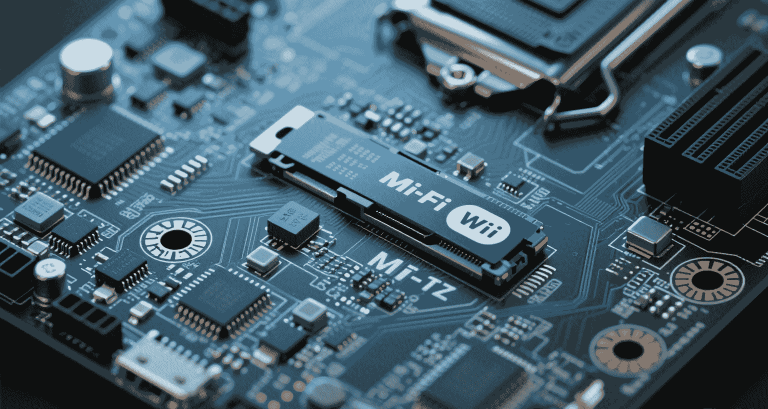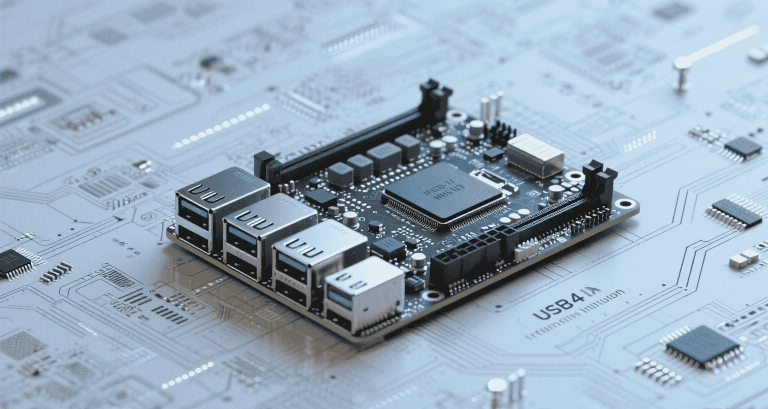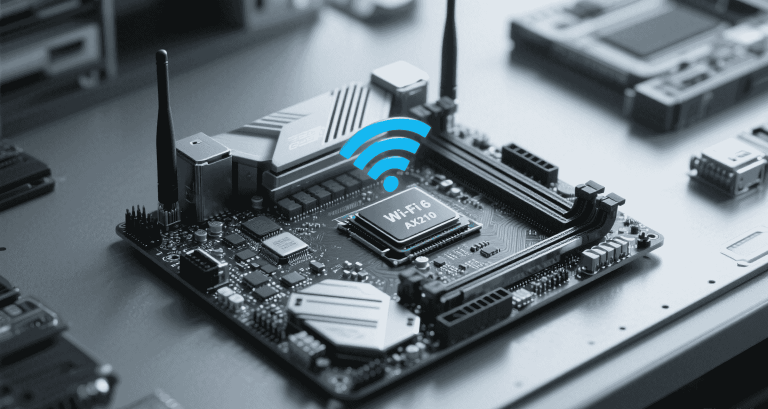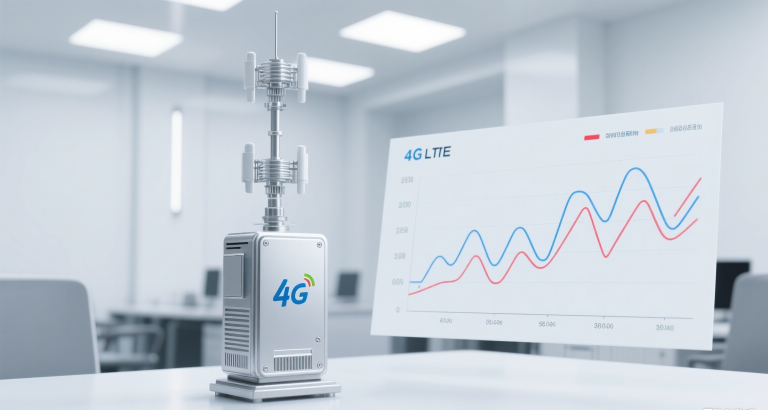Mini‑ITX Motherboards with Thunderbolt 4 Support
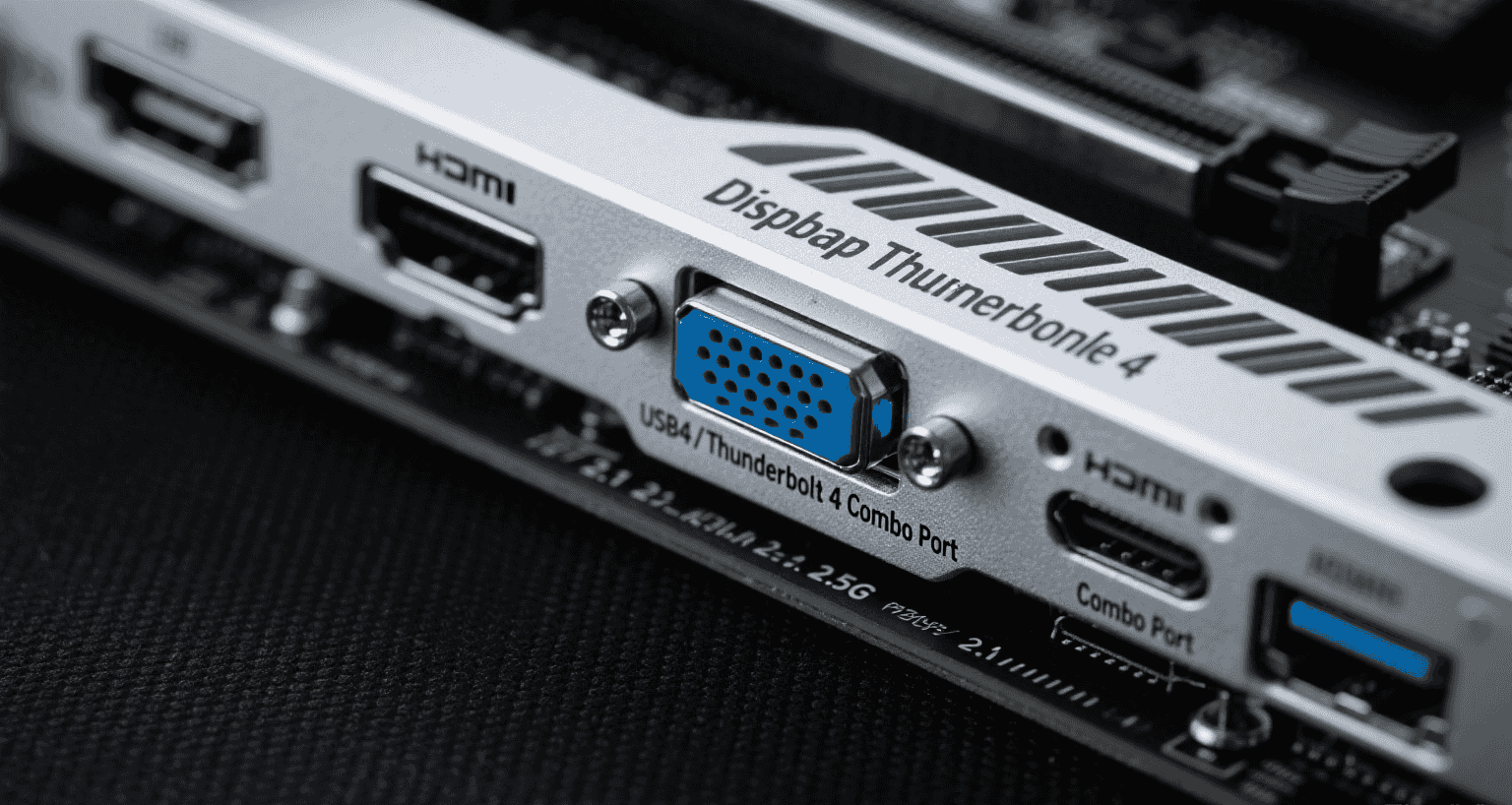
Table of Contents
- Introduction
- Thunderbolt 4 Architecture & Requirements
- PCIe Lane Allocation & Signal Routing
- Power Delivery & Connector Design
- Thermal Constraints in Small Enclosures
- BIOS & Firmware Integration
- Driver and OS Ecosystem Support
- Cable Types, Length, and Docking Stability
- Security & DMA Hardening
- Compatibility & Platform Limitations
- Use Cases & Real‑World Applications
- Recommended Mini‑ITX TB4 Boards & Integration Tips
- Conclusion
Introduction
Thunderbolt 4 delivers blazing-fast 40 Gbps speeds and robust capabilities like PCIe tunneling and USB4 compatibility. When combined with the small footprint of Mini‑ITX motherboards, it unlocks pro-level applications in compact PCs—from eGPU acceleration to creative studios and NAS setups.
This guide is for hardware engineers and embedded integrators evaluating Thunderbolt-enabled designs in SFF systems. We’ll explore signal routing, BIOS control, thermal challenges, OS support, and stability insights from real-world users.
Thunderbolt 4 Architecture & Requirements
Thunderbolt 4 mandates:
- 40 Gbps link combining DisplayPort, PCIe, and USB4
- Kernel DMA protection and secure memory access
- Intel-certified controllers like JHL8540
- USB PD 3.0 integration for up to 100 W power delivery
On Mini‑ITX boards, this adds layout complexity. PCIe routing, signal conditioning, and trace impedance become key challenges in maintaining performance.
PCIe Lane Allocation & Signal Routing
Thunderbolt shares lanes with GPU or chipset:
- Some boards dedicate x4 PCIe lanes to TB4
- Others share lanes between GPU slot and TB controller—may reduce bandwidth under load
Reddit users report that TB4 instability often comes from improper PCIe routing or trace length mismatch.
Power Delivery & Connector Design
For high-wattage peripherals or dock charging, USB‑PD compliance is essential. Boards must support:
- 3 A / 5 A current draw via certified Type-C ports
- Thermal pads or copper planes near power controllers
- Robust port endurance (rated 20,000+ cycles)
Don’t rely on firmware alone—hardware-based PD controllers ensure reliable negotiation and power switching.
Thermal Constraints in Small Enclosures
TB4 chips generate heat under load (40–60 °C). Mini‑ITX systems may experience:
- Controller throttling in fanless enclosures
- Port dropouts when docked + transferring large files
Designers recommend small heatsinks, thermal pads, or 40 mm fans for directed cooling over the TB4 controller.
BIOS & Firmware Integration
BIOS must allow:
- Enable PCIe tunneling and Kernel DMA protection
- Alt-mode for DisplayPort routing
- Device authorization policies
Many boards disable TB4 by default—always update BIOS and review Thunderbolt-specific options under chipset or advanced tabs.
Driver and OS Ecosystem Support
Windows 10/11: Native support, best with Intel drivers
Linux (kernel ≥5.10): Supports USB4, PCIe tunneling, but some features (hot-plug, DP-alt) require patched drivers
Known issues:
- Dock devices vanish after suspend/resume
- USB hubs not detected in cascade mode
- Legacy TB3 docks may need firmware patches
Cable Types, Length, and Docking Stability
| Cable Type | Max Length | Performance | Notes |
|---|---|---|---|
| Passive TB4 | 0.8 m | 40 Gbps | Most stable, low latency |
| Active TB4 | 2 m+ | Variable | More expensive, possible handshake issues |
| USB‑C (non-TB) | 1 m+ | 10–20 Gbps | No PCIe tunneling |
For stability, use certified 0.8 m TB4 cables—avoid long passive cables unless verified.
Security & DMA Hardening
TB4 integrates DMA protection via:
- IOMMU support and Kernel DMA enforcement
- Device authorization policies in BIOS (e.g. “Pre-boot only”)
- Whitelist mode for enterprise usage
This is especially important for secure endpoints, such as healthcare kiosks or financial systems.
Compatibility & Platform Limitations
Most Intel Z690/Z790 Mini‑ITX boards now support Thunderbolt 4. AMD support remains sparse:
- ASRock X670E boards offer USB4—not full TB4
- Expansion cards (e.g., GC-Titan Ridge) need open PCIe slots, hard in Mini‑ITX
Always check if your AMD board includes Thunderbolt headers and PD support—not all USB4 ports are TB4 compliant.
Use Cases & Real‑World Applications
- eGPU Setups: External GPU in a 2-slot TB4 chassis adds RTX-class graphics to NUC/Mini‑ITX systems
- Studio Audio: Ultra-low latency AD/DA conversion via Focusrite/Universal Audio TB4 devices
- Docking Workflows: One cable for power, display, LAN, and peripherals
- Edge AI: TB4 NVMe enclosures or FPGA boxes for inference tasks
Recommended Mini‑ITX TB4 Boards & Integration Tips
| Model | TB4 Chip | Notes |
|---|---|---|
| MSI Z790I Unify | Intel JHL8540 | Full PD, BIOS security, stable eGPU |
| ASRock Z690I PG‑ITX/TB4 | Intel Titan Ridge | Good Linux support, BIOS maturity |
| Gigabyte Z690I Ultra | JHL8540 | Affordable, moderate thermal headroom |
| ASRock X670E PG Lightning | USB4 (no full TB4) | Firmware pending for TB4 cert |
Conclusion
Thunderbolt 4 turns Mini‑ITX from “small form factor” into “pro-level form factor.” With PCIe tunneling, PD charging, and fast I/O, it enables advanced build scenarios for creative, industrial, and technical users.
To build a successful Thunderbolt Mini‑ITX system, remember:
- Use certified cables (0.8 m passive)
- Update BIOS and dock firmware
- Validate thermal headroom
- Plan PCIe usage carefully
When executed properly, TB4 in Mini‑ITX supports powerful systems in the smallest spaces imaginable.

